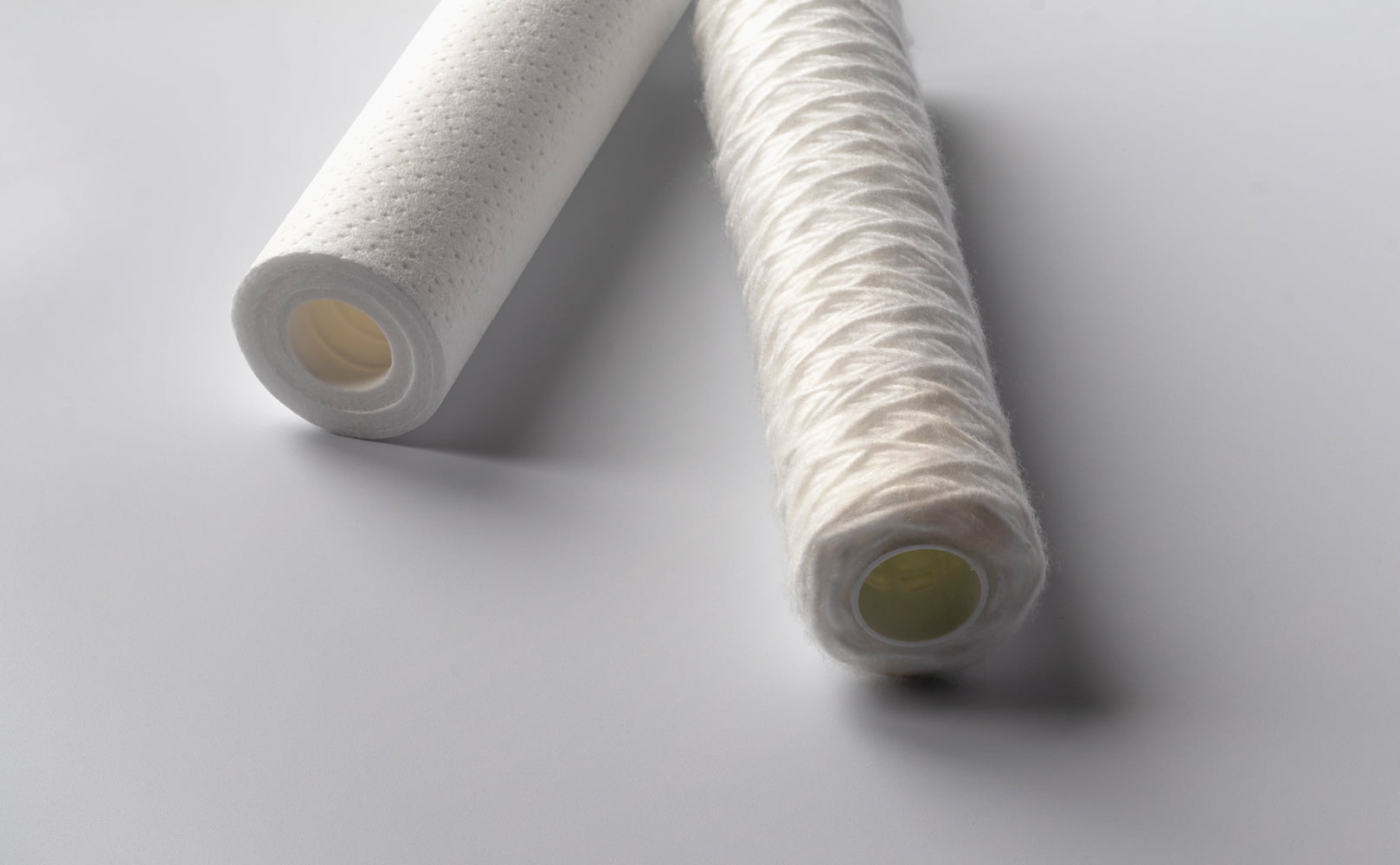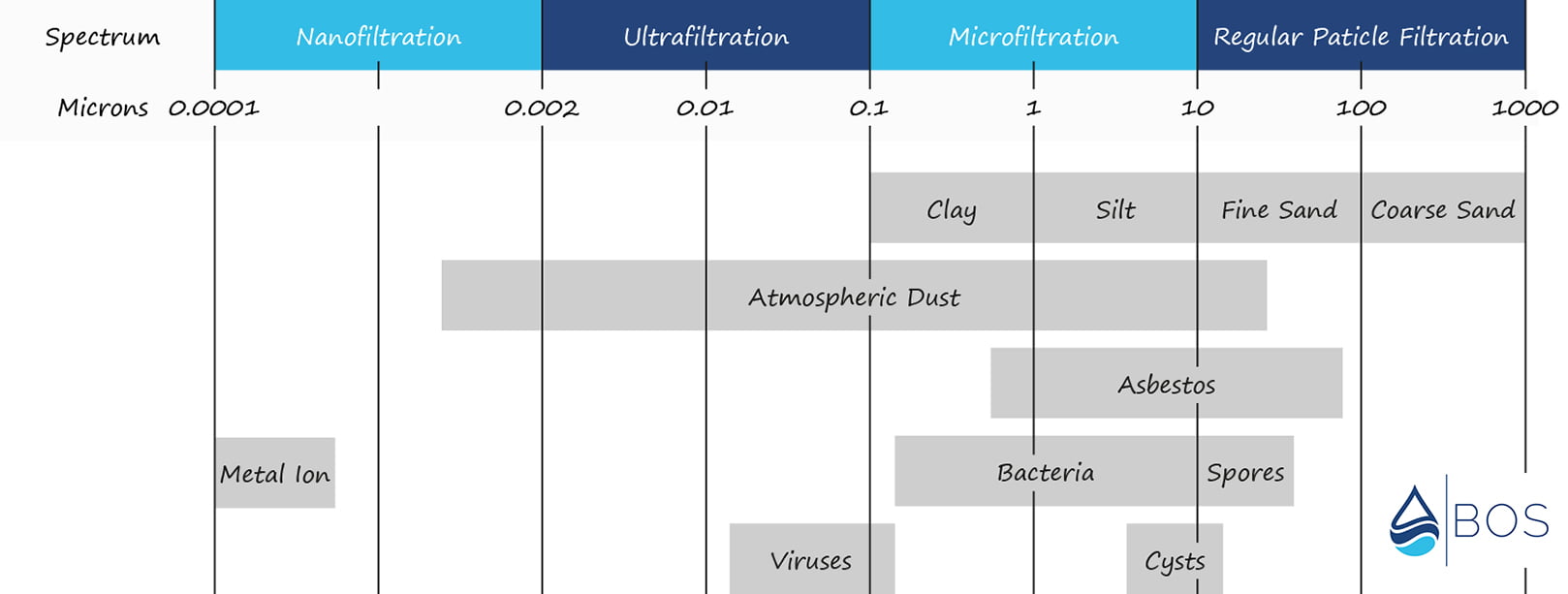1-Micron vs 5-Micron Sediment Water Filter – Which to Choose?
Written by: Gene Fitzgerald // Last Updated: Aug 28, 2023
This page may contain affiliate links. If you buy a product or service through such a link we earn a commission at no extra cost to you. Learn more.
Do you know how to choose the right micron rating for your sediment filters?
1-micron vs 5-micron, many first-time buyers are confused by this, but making the right choice is easier than you might think.
As long as you understand what micron ratings are and how they impact a filter’s performance, it’s not hard to narrow down your search to a few suitable models.
Key Takeaways
- Have your water tested to find out if a 1-micron or 5-micron sediment filter would suit your situation best.
- A 5-micron sediment water filter removes certain types of bacteria and cysts, asbestos, dusts, sand and other sediments, silt, and molds.
- A 1-micron sediment filter removes all of the above plus even more bacteria/cysts, clay, some lead, and even stuff like paint pigments.
- Note that filters with smaller microns ratings tend to clog faster which can lower water pressure and flow and require more frequent maintenance.
What’s a Micron Rating?
A water filter’s micron rating is used to measure the smallest size of particles that can be captured by the filter. For example, a 10-micron sediment filter is guaranteed to remove all particles with a size of 10 microns and above. Many filters on the market are listed with a micron rating, and all reputable manufacturers tend to include that information about their products.
The Size of a Micron
A single micron is very small. It’s just 0.001 of a millimeter, and is therefore used for measuring very small objects. Human hair can be between 10 and 100 microns wide, while red blood cells are around 10 microns.
Absolute vs Nominal
The difference between absolute and nominal micron ratings is another confusing factor. The easiest way to look at it is to treat nominal ratings as a rough estimate, while absolute ratings are more of a hard guarantee. In other words, if a filter has an absolute rating of 10 microns, it’s definitely going to remove everything larger than that.
What’s a Micron Water Filter?
Always pay attention to the micron ratings of filters you’re considering buying. Every good manufacturer should provide that information and make it as obvious as possible. Checking a filter’s absolute micron rating is a good idea to figure out what it can remove, as you know the filter has gone through extensive testing to verify that number.
1 vs 5-Micron Sediment Water Filter – Which to Choose?
Choosing between a 1 and a 5-micron sediment water filter generally comes down to what exactly you want to remove. The difference between the two is very small, and most households should find 5-micron filters sufficient for their needs.
In any case, it’s often a good idea to start your filtration with a larger filter, like 50 or 100 microns – especially if you are on well water. This will help capture large contaminants and prevent them from making their way to your finer filters and clogging them up quickly.
Try to keep your smallest filter size as large as possible. If you don’t specifically need a 1-micron filter, don’t buy one. It may restrict your water flow and lead to pressure issues.
What Do You Want to Remove?
Understanding your water supply situation and the types of contaminants you have present is the most important step in choosing the right micron filter. You should always get your water tested to know exactly what kinds of contaminants you’re trying to remove.
5 Micron
Here is what a 5-micron sediment water filter can remove:
- Many types of bacteria
- Some types of cysts
- Asbestos
- Dusts
- Sand
- Silt
- Molds
1 Micron
Here is what a 1-micron sediment water filter can remove:
All of the above plus
- Even more bacteria
- Even more cysts
- Clay
- Lead (but not lead dust)
- Plant spores
- Paint pigments
Don’t Forget About Water Pressure!
Always try to go with a larger filter when it would suit your needs. You should not install a smaller filter just for the sake of it. This could lead to pressure problems, especially if you already have a relatively low pressure in your water supply. Finer filters also tend to get clogged up more quickly and need more frequent replacements.
If you have any questions about 1-micron vs 5-micron sediment filters please don’t hesitate to leave a comment below!
Information provided on BOS is for educational purposes only. The products and services we review may not be right for your individual circumstances.
We adhere to strict editorial guidelines. Rest assured, the opinions expressed have not been provided, reviewed, or otherwise endorsed by our partners – they are unbiased, independent, and the author’s alone. Our licensed experts fact-check all content for accuracy. It is accurate as of the date posted and to the best of our knowledge.



